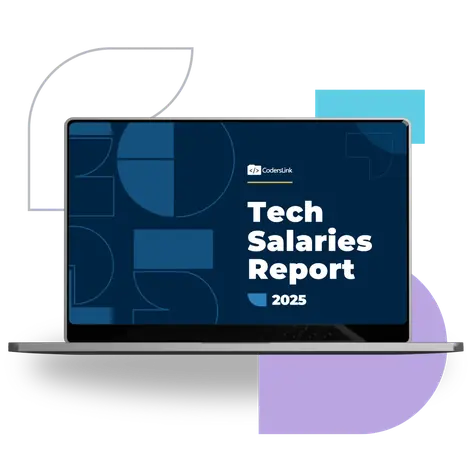
Every great company starts with a vision, but that vision often relies on collaboration. Whether it’s Microsoft, Google, or Apple, none of these tech giants were built by one person in isolation. They were fueled by partnerships, innovation, and the blending of talents.
As companies grow, so does the complexity of hiring. For tech companies, the choice of outsourcing models—software development outsourcing or talent recruitment outsourcing—can have a long-lasting impact on business performance and growth. But which option is best for you? The answer depends on your company’s specific needs, goals, and long-term strategy. Let’s dive into the differences between these two approaches.
Understanding Software Development Outsourcing and Talent Recruitment Outsourcing
Software development outsourcing involves hiring external developers or agencies to complete a specific project, while talent recruitment outsourcing (such as workforce augmentation) focuses on sourcing permanent or semi-permanent team members who integrate into your company’s workflow.
Why Outsourcing Is a Core Growth Strategy for Tech Companies
Hiring the right talent is a critical driver of innovation. For companies on a path to rapid growth, outsourcing can be a smart way to augment talent while keeping core business operations efficient. But not all outsourcing models are equal. It’s important to understand which approach suits your project or long-term needs.
The Case for Software Development Outsourcing: Pros and Cons
Software development outsourcing works well for one-off projects that do not directly impact a company’s core business functions. Examples include developing a non-critical mobile app or adding a minor feature to your website. This model can be cost-effective in the short term.
However, software development outsourcing also presents risks:
• Limited control: You’re dependent on an external team whose processes and work quality may not align with your expectations.
• Communication barriers: Time zone differences or language challenges can create delays and miscommunication.
• No long-term engagement: Once the project is done, the knowledge leaves with the team, and there’s no continuity.
For startups or businesses with highly specialized needs, this model may not always be ideal. Projects may require more agility, frequent changes, or deeper integration into your existing systems, making software outsourcing an unpredictable option.
The Benefits of Talent Recruitment Outsourcing (Workforce Augmentation)
If your focus is on long-term growth and building a strong, cohesive team, talent recruitment outsourcing offers significant advantages over traditional project outsourcing.
Here’s why:
• Direct control over hiring: Unlike software outsourcing, you get to select candidates that align with your company’s culture, goals, and long-term vision.
• Cultural integration: Outsourcing talent allows you to onboard professionals who can immerse themselves in your company’s processes and values.
• Flexibility and scalability: Workforce augmentation is scalable, meaning you can easily adjust the number of hires based on project demands, market changes, or company growth.
Three Common Outsourcing Models
1. Software Development Outsourcing (Project Outsourcing): Best suited for short-term, low-stakes projects where you don’t need continuous engagement or oversight. While cost-effective, this model often results in communication barriers and inconsistent quality due to a lack of ongoing relationships with developers.
2. Talent Recruitment Outsourcing/Workforce Augmentation: Ideal for building sustainable teams that can take your company to the next level. A third-party recruitment partner vets and provides candidates, allowing you to focus on hiring for long-term growth.
3. Dedicated Development Center (DDC): If your company is ready to expand into new regions or hire a large number of developers (40+), establishing a dedicated development center allows you to build a permanent team in a lower-cost region such as Mexico. This gives you full control over operations while leveraging local talent pools.
Workforce Augmentation: The Strategic Choice for Long-Term Success
For growing companies that want to build a team, not just finish a task, workforce augmentation stands out as a sustainable strategy. Whether you’re hiring for permanent placements, on-demand recruitment, or expanding with a dedicated development team, this model ensures continuity, skill integration, and long-term productivity.
Scenarios for Choosing the Right Outsourcing Model
Let’s look at a few scenarios to help clarify which model might be best for your company:
1. Scenario 1: Your company is growing, and you need to hire developers to scale. Workforce augmentation allows you to build relationships and train team members for long-term success. Software outsourcing, by contrast, results in completing the project but provides no lasting value.
2. Scenario 2: Your project is short-term but requires highly specialized skills. While software outsourcing might seem cost-effective, you risk skill gaps and uncertainty about the developer’s ability to manage changes. Talent recruitment outsourcing ensures you find the right expertise with more accountability.
3. Scenario 3: You need to adapt quickly to changing project requirements. With workforce augmentation, you onboard a team member who understands your workflow, while software outsourcing might lead to communication delays and project derailment.
Long-Term Benefits of Workforce Augmentation
Talent recruitment outsourcing allows for direct communication, cultural integration, and long-term engagement. This not only increases the quality of the work but also boosts team morale and productivity.
By having skilled developers on hand, companies can avoid the risks associated with ad-hoc project outsourcing. CodersLink can help facilitate this process by tapping into Mexico’s thriving tech ecosystem and vetting developers based on your company’s specific needs.
Finding the Best Outsourcing Fit
Making the right call between software development outsourcing and talent recruitment outsourcing is a strategic decision that depends on your company’s long-term goals. While software outsourcing might seem more flexible for smaller projects, it often leads to disjointed teams and inconsistent results. In contrast, workforce augmentation and dedicated development centers provide control, flexibility, and team integration, making them the go-to choice for growing tech companies looking to scale.
Ready to scale your tech team? CodersLink can help you find the right talent to meet your company’s goals. From on-demand recruitment to building dedicated teams, we have the expertise to support your growth. Contact us today to learn how we can assist with your talent needs.


